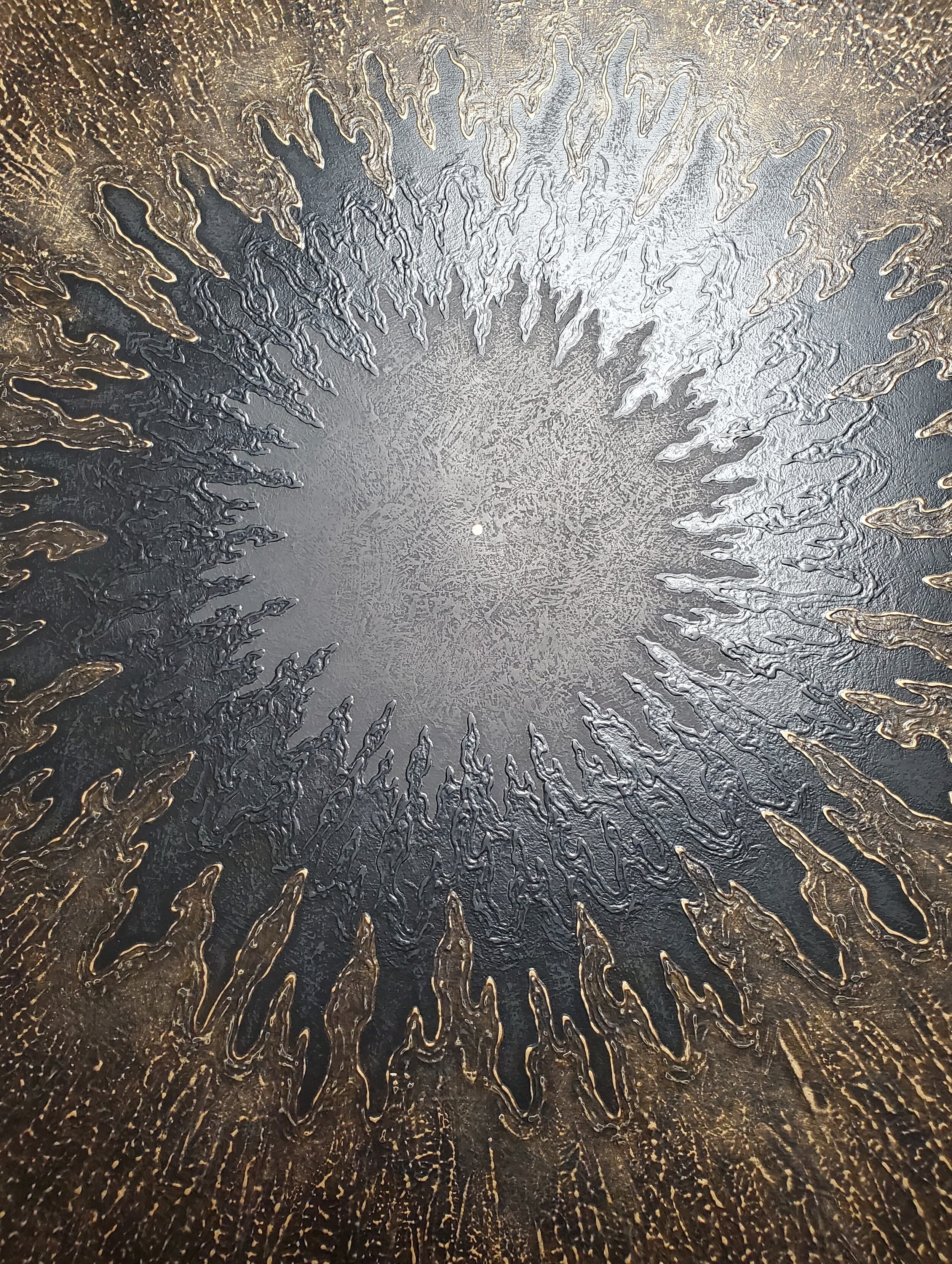Atman
Atman translates from Sanskrit as the inner self, or soul. It is understood as the primary, fundamental essence of an Individual—a concept shared throughout and across human histories. In these works the Soul is visualized as a golden point—or bindu—which is expressed in its transient emergence upon the blackness of the Void. Atman speaks to the endless transmigration of the Self; the migration of the soul from matter, or conversely, to matter. The undulating forms circumscribing its aperture of release are derived from the sagittal sutures of the human cranium, the site of the crown chakra, through which the soul is ultimately released. The form also references the opening of the eye, through which all light—and knowledge—passes.
Atman is beyond the phenomenal world of matter, and its ultimate goal is liberation, or moksha, the path to which lies through self-knowledge. In Indian philosophy, this self-realization is conceived of as a union between one's true self and the Ultimate Reality that is: completely identical, completely different, or simultaneously non-different and different.
Atman 7 2021 Copper repousse elements, mineral particles, and abraded acrylic with 23.5K gold a on 1 inch D archival wood panel, 36 inch diameter.
Atman 7, detail
Atman 7, detail
Atman 6 2021 Acrylic and 23.5K gold on archival wood tondo panel, 24 inches diameter x 1 inch D. Collection of Pia Roychowdhury.
Atman 6, detail
Atman 5 2021 Abraded acrylic with 23.5K gold on archival wood tondo panel, 24 inches diameter x 1 inch D.
Collection of the Fellowship of the Pennsylvania Academy of the Fine Arts
Atman 5, detail
Atman 4, Terma 2021 Abraded acrylic with 23.5K gold on archival cradled wood tondo panel, 36 inches diameter x 1 inch D.
Atman 4, Terma, detail
Atman 3 2021 Abraded acrylic and 23.5 karat gold on archival cradled wood panel, 30 inches diameter x 1 inch D.
Atman 3, detail
Atman 2 2019 Acrylic and 23.5K gold on Twinrocker handmade paper, 27 inches in diameter. (without frame)
Atman 1 2019 Acrylic and 23.5K gold on Twinrocker handmade paper, 27 inches in diameter. (without frame)












